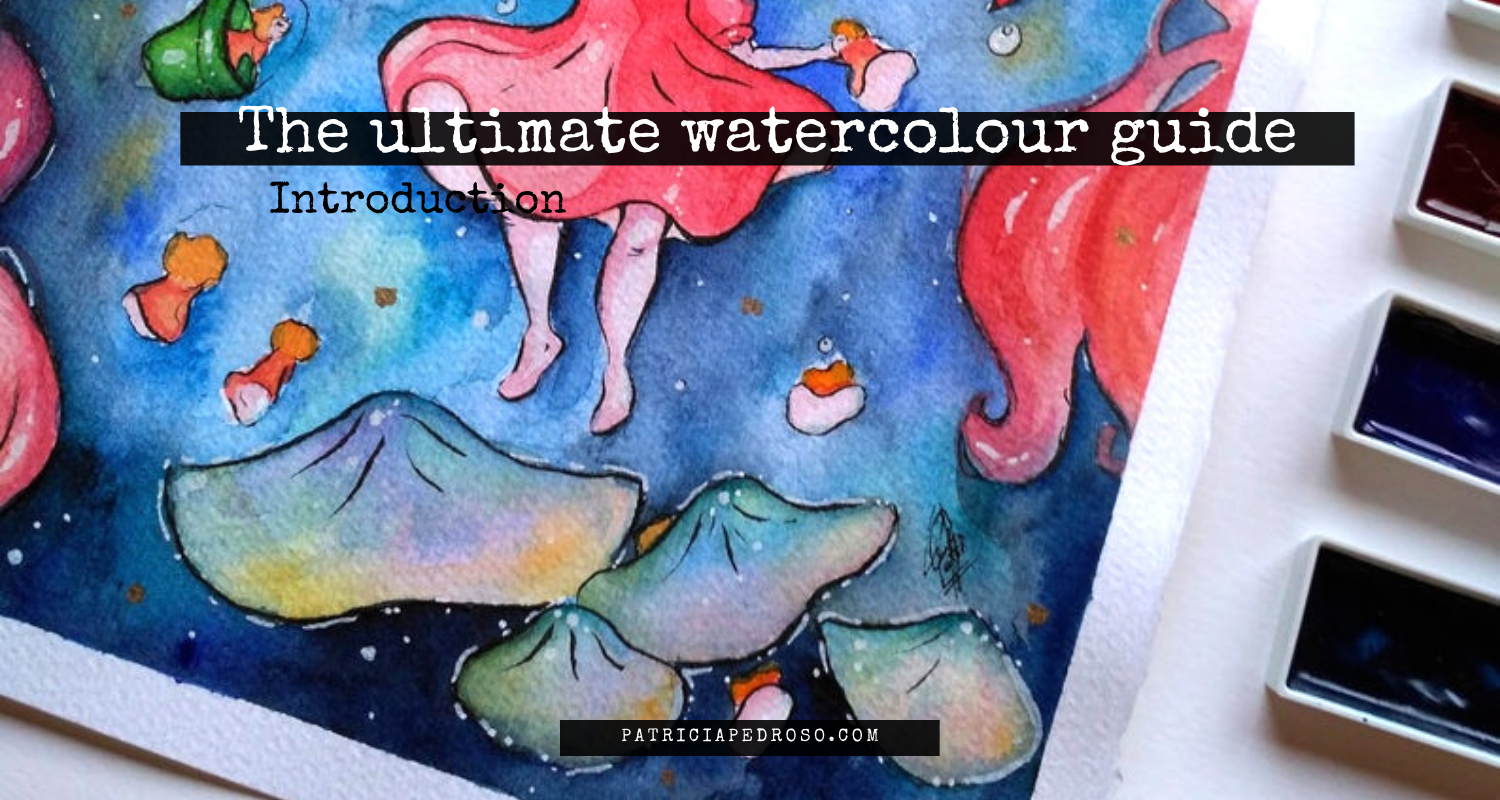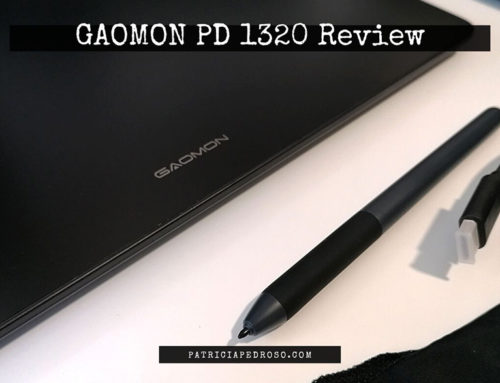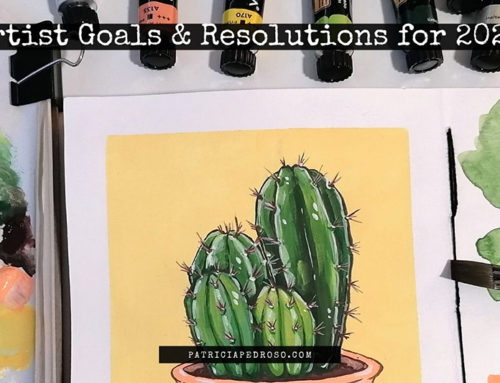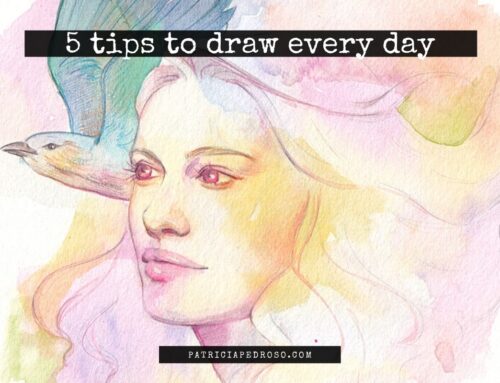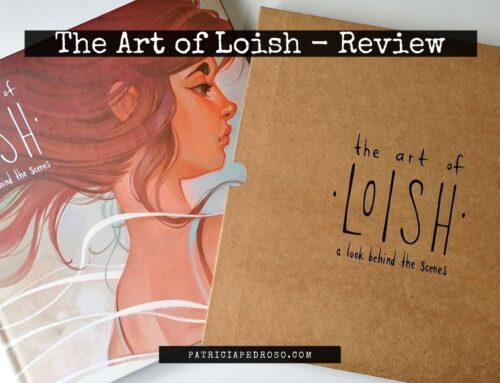Part 1 of the watercolour guide series: introduction & what to expect
So… I’ve been meaning to start this series for a while, but there’s just so much information I want to give about watercolour that it was overwhelming even to just start researching!
Let’s start with a little introduction.
This series is aimed to be a fully comprehensive guide to start – or know more about – watercolours.
I just see so many “tutorials” out there about watercolours that go something like: “paint flowers in watercolours in 10 minutes with this simple blah blah…”
Those tutorials aren’t even worth reading.
I saw/read a few when I first started and they helped me with nothing.
Nothing, really.
They don’t tell you anything about techniques, about how watercolour really works.
No wonder how everyone thinks watercolours are so hard with barely trying them.
But enough about my hate of internet watercolour tutorials!
With this series I want to provide real value.
Is just so hard to find good information that will help you start with them that isn’t basically a sales pitch for a magical video tutorial to paint flowers – or something like that…
I wanted to do something better.
I will link the full series here: (will update it as I go for you to find them easily)
- The ultimate guide to watercolour: Introduction (this one)
- The ultimate guide to watercolour: Paints
- Watercolour Guide: Brushes & paper
- Watercolour Techniques: All you need to know
- The watercolour Guide: Extra tools to ease your process.
- 7 Exercises to practice watercolours
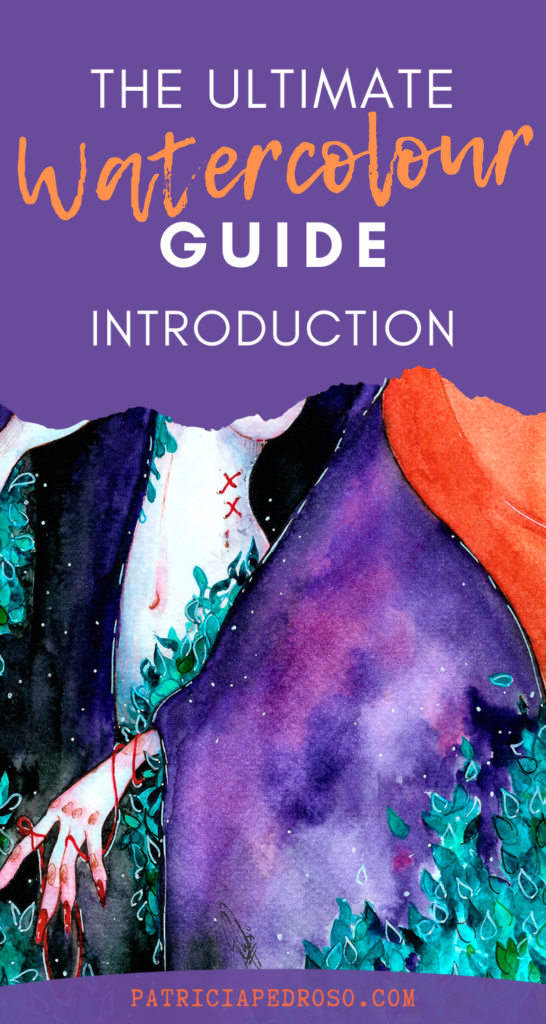
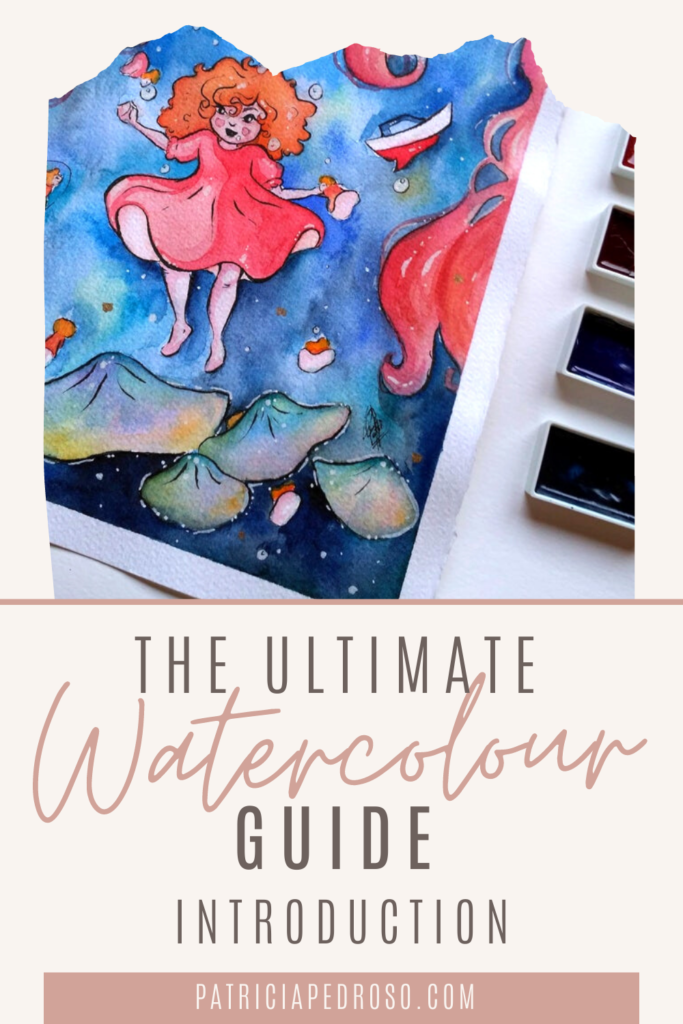
WHAT WILL I DO?
So, in these series, I’m gonna try to cover everything: what is watercolour, how it works, basic techniques, how to pick brushes & paper, resources & videos that are really useful, round-up of watercolours sets/paints to start out & professionals…
And more!
Hopefully, I will cover everything in a comprehensive manner without boring you too much with all the technicalities, so you can tackle watercolours with more confidence!
If there’s something I haven’t mentioned and you’re interested in knowing about, let me know, as I’m working on it as I go.
Though it might be on my list already, I will try to cover anything that could help you.
Apart from these posts, I will probably make some youtube videos to compliment them for techniques and stuff that’s easier to watch than read.
Also, I don’t want to lie here, with all the information I’m collecting so far & what I still have to research, I know I will have much more detailed information than what I will post in these series.
Why? Because I want to make this fun and quick to read while still providing value.
So I will probably make an ebook later with all the info here and more detail for those who want to know more.
But that will probably take a while, as I will still have to put together this series first!
And this series won’t be a sales pitch for that, this I promise, just an extra if you’re interested in knowing more & help support me.
WHY DID I DECIDE TO DO THIS?
Well, first of all, for what I told you at the intro of this post.
I see a lot of “need” for watercolour tips and very little resources that are free that cover a bit of everything.
Second, I love watercolours and I always have since I first tried them.
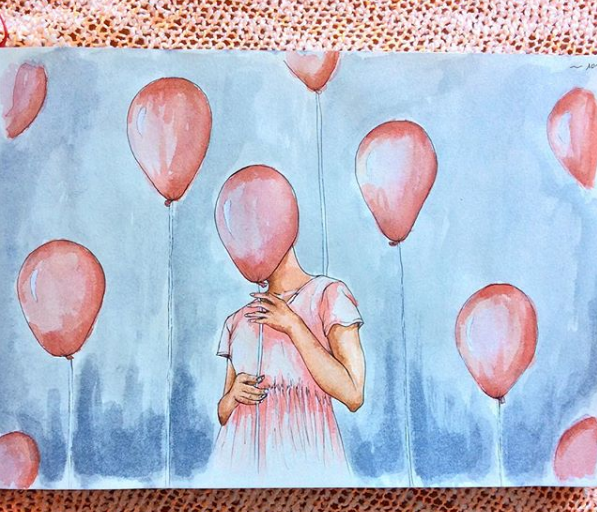
I’ve been using them for the past 5 years so I’ve learned a thing or two.
And yes, I might not be a master in watercolours like some artists out there but I still know the basics of everything & learned how to manage them.
I have books and resources at hand and…
I know how to research for the rest! Basically, I do it so you don’t have to.
That’s the point of you reading this, right?
Alright, it’s time for the watercolour intro!
WHAT ARE WATERCOLOURS?
Okay, let’s introduce the main star of these series: watercolour.
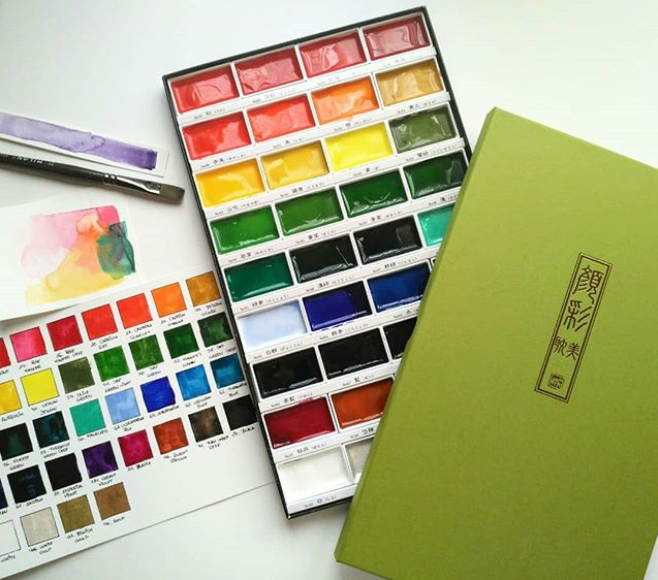
Watercolours are named after its primary component: water.
It basically consists of a pigment dissolved in water and bound by a colloid agent – a gum, like gum Arabic.
Watercolours – believe it or not – are one of the oldest artistic mediums known, as there’s evidence of its use back at the Stone Age!
One thing that I always find interesting about watercolour is that it wasn’t very appreciated back in the old days.
It was seen as a way to do quick studies or underpaintings for later cover with oil paint.
It wasn’t until the eighteenth century – the British Golden Age of watercolour – that they became a popular and recognised as art on its own.
The method of working with watercolour is also by dissolving them in water to create different levels of saturation of the paint.
Think of it as when you add white to a colour to make it lighter, but with watercolours, you add water instead!
WHY USE WATERCOLOURS VS OTHER MEDIUMS?
One of the things that make watercolours so different and unique – and why so many people find it hard – it’s its unpredictability.
The way the paint interacts and plays with water is different from any other mediums and that’s why sometimes it’s hard to tackle at first.
A common mistake is to try and approach it like acrylics or oils, but watercolours have a mind of its own!
But they also have a very distinctive look and a way of capturing light and the effects of water in a very unique & realistic way.
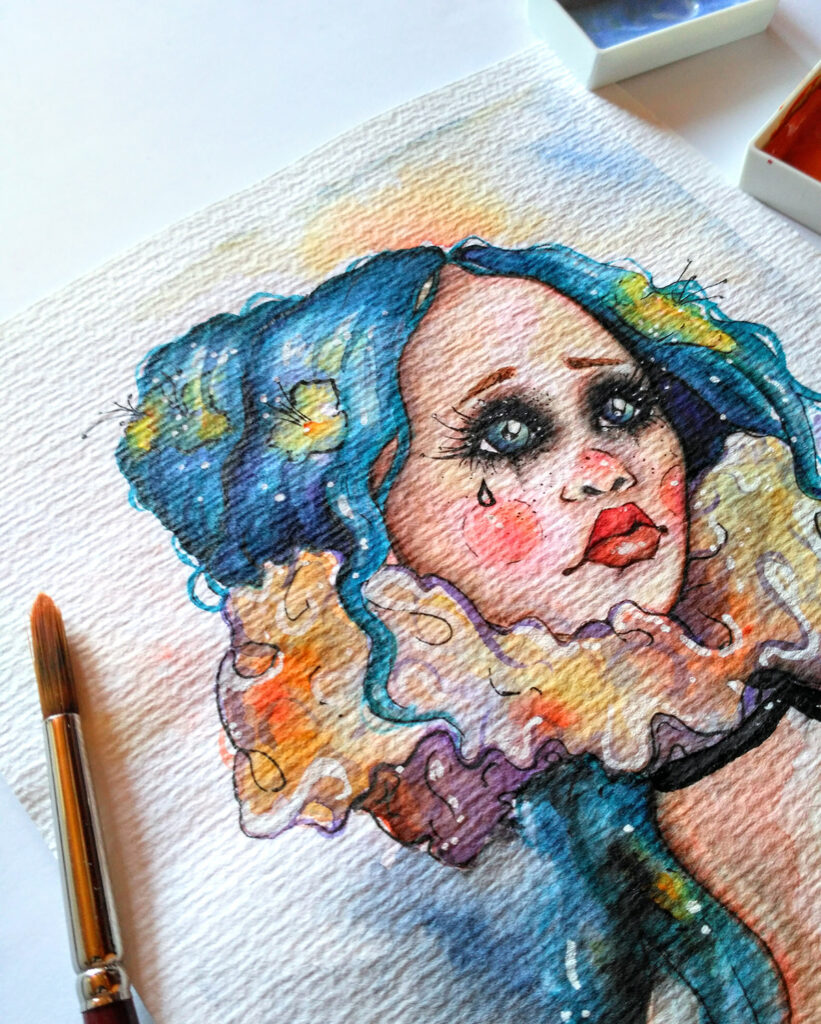
They’re very portable and easy to carry around, making them very well-suited to set up and paint outdoors.
The unpredictability of their behaviour is more of an advantage than a disadvantage when you learn to let it happen and use it in your favour.
The interaction between water & paint creates unique effects that can hardly be replicated, giving each painting a different look.
So it allows for methodical and spontaneous methods of working
In conclusion, the things you can do with watercolour you won’t be able to replicate with any other medium – except maybe digital.
SOME TIPS BEFORE STARTING
Before starting this watercolour adventure, I want to give you a bit of advice & also some tips for starting out.
Watercolours are a transparent medium, you can’t paint light colours over dark.
You leave your whites unpainted with the white of the paper instead.
This means you have to shift your gears and learn to plan accordingly before start painting.
Of course, as always, there are tons of ways you can approach painting with them but you should start by learning & following the rules.
And then you can break them.
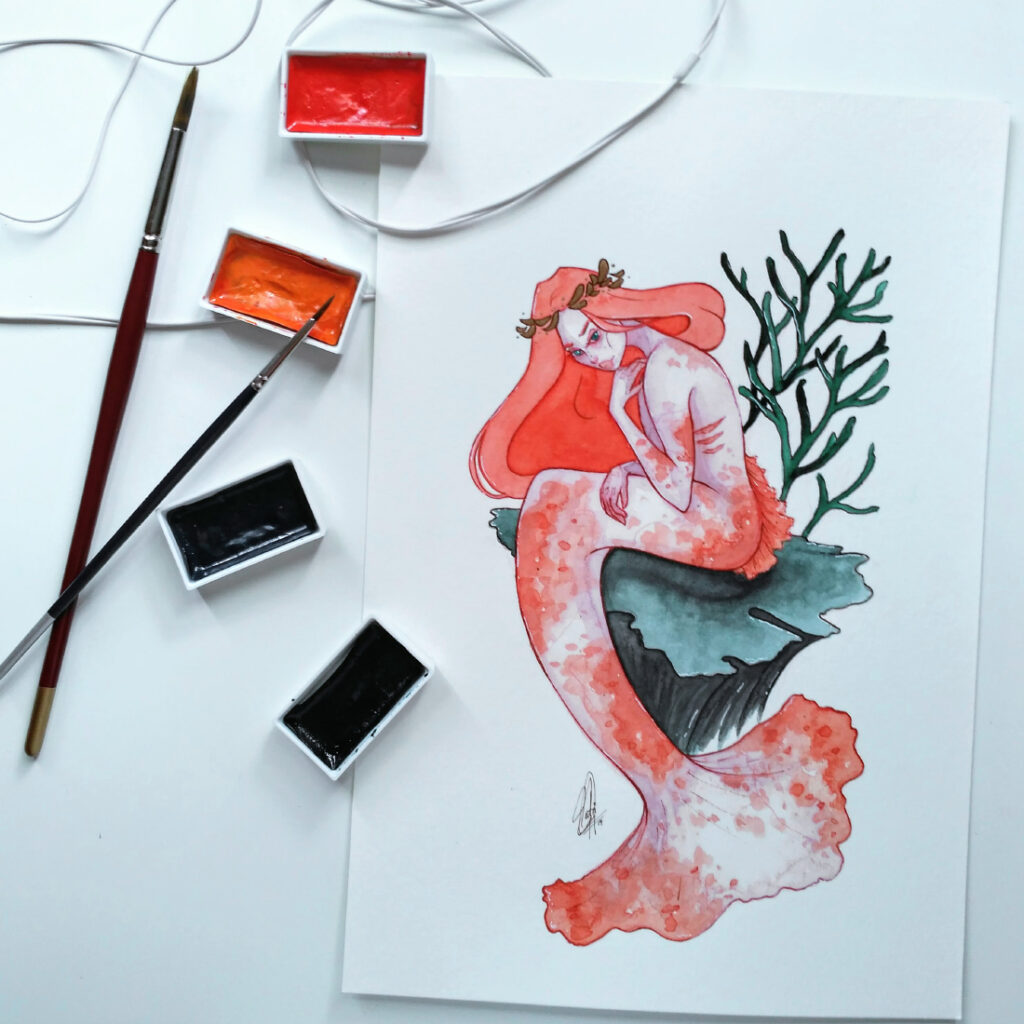
So you need to start working from light to dark in the beginning – & maybe later you find your own technique – and also learn to identify that in your references/compositions before start working.
This can be summed up in: the importance of planning in watercolours.
You won’t be able to make corrections – well, only very subtle ones & they’re limited.
In time, you will learn to anticipate how the pigment will behave in certain situations and learn to control the ‘happy accidents’ but this takes time and a lot of practice.
You need to understand the colour you see on the palette and the brush will look and behave differently when on the paper.
And it will always dry lighter!
Confidence will make all the difference when approaching watercolours, don’t let them intimidate you & don’t be afraid to make mistakes!
Or better yet, happy accidents 😉
WHAT COMES NEXT?
Well, I have a ton of info coming for y’all so brace yourselves.
What can you expect for the next posts?
The next post is all about paints, some basics about composition durability, types of paints & all that jazz.
Then I’ll talk more about paper & brushes, and then techniques.
The next few will come as I go for now, but you can check the index at the beginning if you want to find out more!
If you want to be notified when they come out – and get a few nice freebies on the way – you can subscribe to my mailing list here:
Oh, and I’ll start recommending resources since now – to kinda divide them between posts when they’re most relevant – the first one is:
Watercolor Fundamentals with Gonzalo Carcamo in the online learning platform Schoolism.
Want to know more about Schoolism & how it works before committing to paying anything? Here’s my full, ongoing review:
But a bit more about Carcamo’s class, since is not on the review cause I’m binge-watching it now.
I’m checking it out to add more info to my research and also know if I should recommend it or not.
And so far I’ve liked it very much!
As the name indicates is a fundamentals class but I’ve found it quite useful maybe even to more seasoned artists, for me it helped to remind myself of some facts & techniques I should probably re-practice a bit more.
And overall is perfect for anyone starting!
Stay tuned for the rest of the series, I hope you enjoy them!

